When the Sage SALT HD was announced last year, it rode an enormous hype wave to the forefront of virtually any discussion about saltwater fly rods. It won"Best in Show" at the International Fly Tackle Dealer show in Orlando. And the proclamations came: it's a Scott Meridian killer, or a G. Loomis NRX killer, it's Sage's best saltwater fly rod ever and so on. Then came the naysayers, it's too heavy, the tip is too stiff, it's all marketing, ad infinitum.
The funny thing was, virtually all of these mic-drop declarations came by October of last year. Hell, most of them came in August, within a week or two of the Sage SALT HD being released. And many of those that didn’t were lawn tests. Or stream tests. Not flats tests. Not bluewater tests.
Here we have one simple rule when it comes to rod reviews: rod reviews should be done with care. That translates into a couple of things. First, the reviewer needs to have adequate time to evaluate a rod. Second, a rod should be reviewed in the fishing environments/situations it’s designed for.
Do you really value a review of a saltwater rod that was delivered after an afternoon spent with a demo rod? Or one made after casting the rod on the lawn outside the fly shop? Or even on the banks of a trout river?
Maybe we’re too careful. Or maybe we’re just shit fishermen that don’t have superpowers that allow us to divine the truth about the rods we cast without actually fishing them, for a while, in varying conditions, in the places they’re designed to be fished.
Whatever the reason, in reviewing the Sage SALT HD, we took it (a 9 foot 8 weight) to the flats. To chase bonefish. And permit. And barracuda. We took it to cast to stripers in the Cape Cod surf. And in search of sea-run brown trout. And even to throw hulking streamers at golden dorado.
Anyway, here’s what we came up with.
What Works
Feel/Action
When I’m on the flats, I’m far pickier about the way a rod feels than I am when I’m casting pretty much anywhere else. The reason for this is pretty simple. In most other fishing situations, I have time to negotiate with the rod I’m casting. To coax it into doing what I want it to do. But on the flats, where it’s typically one shot and gone, I need to have confidence that I’m not going to be arguing with the rod in my hand when I’m supposed to be delivering a cast.
And so feel is why I wasn’t in love with the original Sage SALT and flat out disliked the Xi3, Sage’s saltwater flagship before the SALT.
Most of the reason for the improved feel is the noticeably softer tip on the SALT HD. Yes, it’s not as soft as the tip on Sage’s X (which shares its borne-of-KonnecticHD-material status with the SALT HD), but it is unquestionably softer than the SALT. Perhaps more importantly, the energy transfer from the mid-section through to the entire upper third of the rod seems considerably improved when compared to the original SALT.
On a glass-still morning when solitary bonefish are tailing on a quiet flat, I’d prefer to have the softer tip of the X. But when the wind blows, as it so often does in the salt, the SALT HD’s somewhat stiffer tip can come in handy.
Accuracy
Like the Sage X, the SALT HD has excellent torsional stability. In other words, it travels in a straight line when you cast it, resisting twisting and wiggling. This translates into accuracy or ... actually, you know what? It’s time for a quick talk about accuracy.
High quality fly rods are commonly touted for their accuracy. But that’s a bit of nonsense. Fly rods can’t be accurate. Fly rods can be precise. When a fly rod travels in the direction you tell it to, with predictable, repeatable performance, that’s precision, not accuracy. Only anglers can be accurate. It doesn’t matter if you’re using the most precise fly rod available to man, if your aim stinks (isn’t accurate), your fly isn't going to land where you want it to.
And so the SALT HD is precise. Satisfyingly so.
But perhaps more importantly, the SALT HD was precise under a wide variety of fishing demands. Leading a school of advancing bonefish on line and by just a couple of feet, casting heavy crab patterns at permit, tucking a bulky streamer into a tight marsh channel, slinging sinking lines and so on, the SALT HD allowed me to deliver flies with precision and confidence.
Versatility
And so that last point—precision under varying conditions—leads to this one. The SALT HD is versatile. Is it the best bonefish rod I’ve casted? Nah. The rod, if push came to shove, that I’d most like to have in my hand when that next permit shot comes? Probably not (actually, that's still Sage's METHOD). Or the rod I’d pick above all others to huck sinking lines off a jetty? Again, no.
But it is a rod I'd feel confident doing all of those things with, and that's a rarity. In fact, it may be one of the best saltwater-geared rods that I’ve cast at doing lots of different things and doing them well. And in a world where most of can’t afford to own a bonefish rod and a permit rod and a striper rod and a barracuda rod and salmon/steelhead rod and so forth, that’s no small compliment.
The fact that the SALT HD is so versatile likely means that it represents an excellent choice for everything from relatively novice to advanced intermediate casters. While its do-it-all personality might not suit truly advanced casters who prefer (and possess the considerable level of skill required) to specialize more, the vast majority of anglers headed to the flats will likely be well served.

Appearance
Let’s not pretend looks aren’t a thing when it comes to fly rods. They are. For everyone but unicorns.
The SALT HD is, as is the case with most Sage rods, a finely crafted, handsome rod. The “squid ink” blank color combined with the rod’s blue wraps is striking, the reel seat is a pleasing matte black and of particularly high quality and, as expected, the cork is excellent. And, as others have noted, the inclusion of the rod weight on the reel seat’s sliding band is a particularly appreciated fine touch (for distinguishing multiple rod weights from one another when stowed in the rod holders—if that’s a problem you’re lucky enough to have).
What Doesn’t
Weight
Weight is something I just don’t care about. At least not all that much. At least not with most rods. At least not under most fishing conditions.
But, yes, the SALT HD is a bit heavier than other saltwater, flagship competitors—both on the scale and in the hand.
So, go ahead and knock the SALT HD a bit for being heavy.
For my fishing, however, it doesn’t matter at that much. This is a rod I sight fish with. Or stalk with. Selective, intermittent casting. I’m not blind-casting all day with the SALT HD. And, if I was, I’d almost certainly be fishing a full sinking line, making the extra half ounce the SALT HD is supposedly bogging me down with completely meaningless.
Final Word
For a regular fisher of Sage rods that, when headed to the flats or the surf or elsewhere in the salt, has long reached for Sage's all-purpose or even freshwater-geared rods instead of their saltwater specialists, the SALT HD is a welcome addition to Sage’s lineup. It’s a versatile, precise tool that has a vastly improved feel over its predecessors.
For the rod’s critics, there may be rods that perform better on the lawn or rods that specialize better, but in the real world of saltwater—where the wind blows and the species and conditions vary wildly—the SALT HD does it all and does it all well. It’s a rod that you can take virtually anywhere where the water is salty, and take it there with confidence.

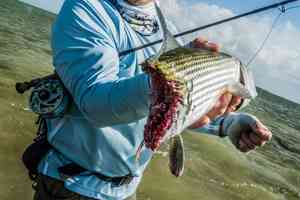


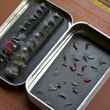


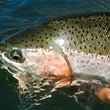

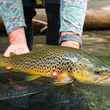













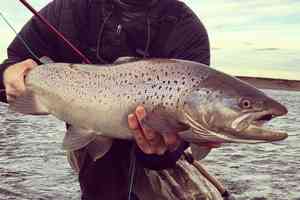



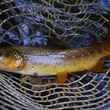
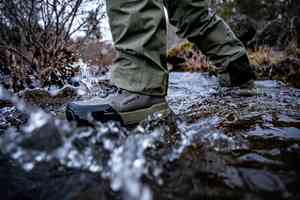

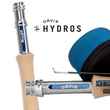
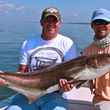
Comments